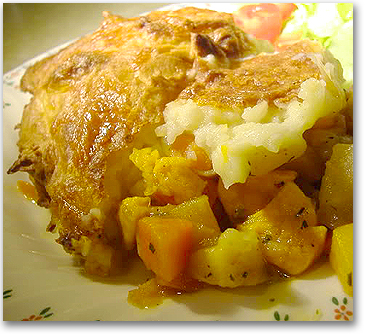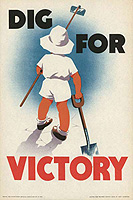 |
| Subscribe |
| Hot Recipes | |
|
Jacket Potato Recipe Beef stew & pearl barley Taboulli Woolton Pie Wassail punch recipe |
| How To's | |
|
How to clean a tea pot Spot a fake Chanel Bag How to string Onions Grow onions from seed How to dig for victory Fennel from seed How to make a choice |
| Pickled Recipes | |
|
Pickled Onions Pickled Jalapenos Pickled eggs Pickled beetroot Pickled Walnuts |
| Chutneys | |
|
Tomato Chutney Recipe Green Tomato Chutney Mango Chutney |
| Pudding Recipes | |
|
Hot Date Pudding Apple crumble Recipe Creme Brulee |
| Film and Video | |
|
Time lapse photography Make a time lapse film Wind chimes time lapse Gently Turning time lapse |
| Music |
What is a Dobro Choose a guitar slide Jacques Brel |
| Latest Blogs | ||
|
How to make Woolton Pie |
 |
|
|
Ingredients: Woolton Pie RecipeCook everything together with just
enough water to cover, stirring often to prevent it sticking
to the pan. Let the mixture cool. Spoon into a pie dish,
sprinkle with chopped parsley. |
What was Woolton Pie?Woolton pie is entirely lacking meat, was not universally well received at the beginning of World War 2. An editorial in The Times said: When Woolton pie was being forced on somewhat reluctant tables, Lord Woolton performed a valuable service by submitting to the flashlight camera at public luncheons while eating, with every sign of enjoyment, the dish named after him. Woolton pie and similar wartime austerity dishes "were forgotten as quickly as possible when conditions returned to normal. Austerity DishesNew recipes had to be created in World War 2 to make the best use of rationing and the produce from victory gardens which were gardens citizens made for growing food using any spare land available to them. These dishes were seen to enable a nutritional diet that could be maintained despite shortages and rationing of many types of food, especially meat.
|
 |
|
Dig for victory How Gardening became a front line war effort |
Rationing and eating outRestaurants were exempt from rationing, which led to a certain amount of resentment as the rich could supplement their food allowance by eating out frequently and extravagantly. In order to restrict this certain rules were put into force. No meal could cost more than five shillings; no meal could consist of more than three courses; Establishments known as "British Restaurants" supplied another almost universal experience of eating away from home. British Restaurants were run by local authorities, who set them up in a variety of different premises such as schools and church halls. Here a three course meal cost only 9d. Standards varied, but the best were greatly appreciated and had a large regular clientele. Who was Lord Woolton?Woolton pie was originally known as Lord Woolton pie after Frederick Marquis, 1st Lord Woolton (1883-1964). Woolton Pie was a recipe produced for the British public by the Ministry of Food during the Second World War. Lord Woolton became Minister of Food in 1940 |